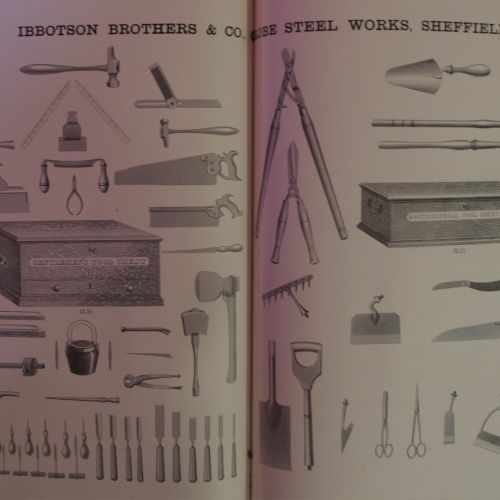The Cutting Edge: Cutlery and The Globe Works

Sheffield has been synonymous with ‘cutlery’ for almost three hundred years, although documentary evidence for knife-making goes back to 1297. The Globe Works, is described as a purpose-built, integrated cutlery and edge tool works, and was built by Ibbotson and Roebuck, merchants of ‘edge tools, jointers tools, fenders, saws, scythes and stove grates’. So, where’s the cutlery you ask?….
The term cutlery, in fact, means items that ‘cut’. This includes knives (along with scissors and razors), but from the mid-eighteenth century onwards, it also included edge tools; chisels, saws, spades, shovels. Many of the processes in their production are similar to cutlery (knife) manufacturing, and the skills were most certainly transferable.
Forks and spoons, commonly regarded as cutlery alongside knives, are not actually ‘cutlery’. These are known as ‘flatware’ and are made using different processes, whilst dishes, bowls, teapots, trays and all the other items you might expect set out on a fine dining table or sideboard are ‘holloware’. Again, these items follow different processes in their production and were unlikely made at the same works as the cutlery and edge tools. However, the larger works complexes would have space for the storage, packing and distribution of complete sets of matching wares.
Follow us for more interesting updates from our research work into The Globe Works and its history!
